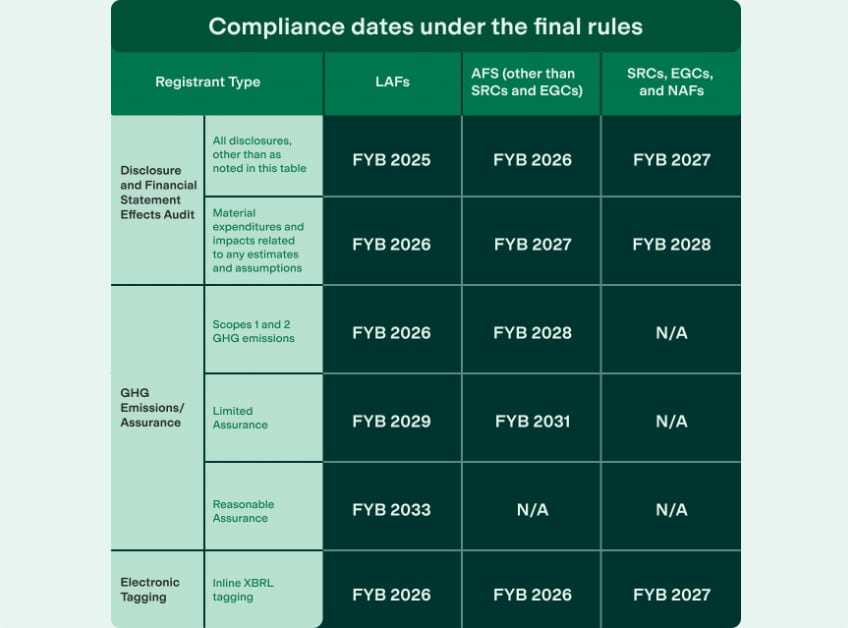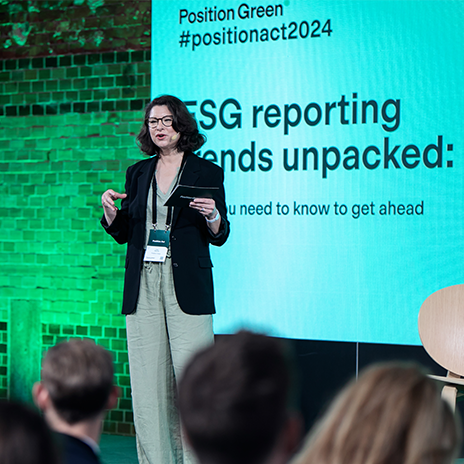CSRD: You’ve done your double materiality assessment – where to next?

With your double materiality assessment (DMA) done, you now have an excellent view of your company’s material sustainability matters – from both a financial and impact perspective – which creates a solid foundation for the next step of doing a gap analysis, getting ready for CSRD and ultimately creating value from sustainability in your business.
Assessing the gaps to CSRD compliance
The gap analysis identifies the shortfalls between what data you have available already and what’s required by the CSRD and ESRS in light of your materiality assessment. This overview creates a common understanding of the scale and scope of work required to achieve compliance and serves as a basis for developing a gap-closing roadmap to achieve it. The exercise is best performed by an internal taskforce of sustainability subject matter experts coupled with external advisors to guide the process and a synthesised version of ESRS requirements.
Having a baseline established, the question is then: How do you close the gaps to compliance while also reaping the strategic benefits of the DMA outcomes?
A robust readiness roadmap is pivotal in achieving this. It requires a considered approach to implementing actions that not only satisfy the ESRS requirements – e.g. in terms of audit-ready disclosures and strategies for material topics – but also capture opportunities for value creation.
Building a readiness roadmap – What are the challenges?
While the focus points of the roadmap vary for companies depending on DMA outcomes, there are common challenges to consider in outlining actions:
- Prioritisation and phasing: What are the impactful projects to implement and along what timeline?
- Anchoring: Where do we anchor the initiatives and who’s involved in what projects?
- Compliance tracking: How do we sync the setup with regulatory deadlines and track progress?
- Value creation and strategy: How do we exploit the opportunities identified in the DMA and go beyond box-ticking?

Creating a coherent governance structure is key, not only to hit compliance deadlines but to support all sustainability projects that fuel growth.
Olivia Krall – Position Green
Two main tracks to consider in the roadmap
To maximise the value of the CSRD readiness process and cater to the challenges above, the work should be considered from both a compliance perspective and a strategic perspective. Compliance gaps will generally need to be solved in one overarching work stream with certain stakeholders, and the strategic elements to differentiate you as a business and exploit the opportunities identified will need to be solved with other people and processes.
1. The compliance track – hygiene factors
- Prioritisation and phasing: The timeline for prioritised projects needs to be aligned with your company’s overall disclosure deadlines and phased-in disclosure requirements, but also account for your resources.This is a long-term undertaking and elements such as updating policies and risk management processes take considerable time and manpower.
- Update your management system to anchor: The link between the DMA and existing processes needs to be created to ensure you operationalise your findings. In most cases, you can tick a lot of boxes by updating your Management System (e.g. ISO 9001, ISO 14001 and ISO 45001) to align with the ESRS due to the significant overlap between the two frameworks. This leads to an update of existing metrics, targets and policies and ensures that ownership and execution is anchored within the relevant departments.
- A supporting governance model: To streamline how you implement and communicate compliance-focused actions internally, you’ll need to map your existing organisation and operating model, including roles and responsibilities, training initiatives and ESG monitoring mechanisms. Creating a coherent governance structure is key, not only to hit compliance deadlines but to support all sustainability projects that fuel growth.
2. The strategic track – value creation
- Define projects beyond compliance: Harness the financially material opportunities identified in your DMA to create business value. You may, for example, have identified a growth opportunity in new markets opening up due to climate change. Define a strategic project and drive it similar to other strategic projects, close to senior management’s attention.
- Update your ESG strategy: What overlaps with your current strategy have you identified? Strategic anchoring and business model adjustments might be a key requirement to not only become compliant but also reap the strategic benefits. It is recommended to review and adjust your existing corporate and/or sustainability strategy to match your material sustainability matters identified, in particular, focusing on the opportunities found.
- Plan the path to net zero: Most companies will be required to develop a net-zero transition plan which outlines what your GHG emission opportunities are and how these are compatible with the transition to a sustainable economy. Aside from supporting the CSRD granular emissions disclosures, a robust plan satisfies the mounting scrutiny of stakeholders and sharpens your company’s competitive edge.
How Position Green can help
Set your sights on CSRD compliance with tailored advice from our in-house experts. Get insights on strategic next steps in closing gaps and hands-on support in creating a solid sustainability strategy and readiness roadmap adapted to your business needs and ambitions.
This expertise is underpinned by our ESRS software, designed to support all aspects of your journey. Become self-sufficient in working strategically and operationally with data management and CSRD readiness– from performing your DMA directly in the software through to setting targets and metrics. Collect reliable data from your entire organisation and supply chain with complete transparency.
ESRS Reporting Software
Olivia Krall
Manager
Position Green


